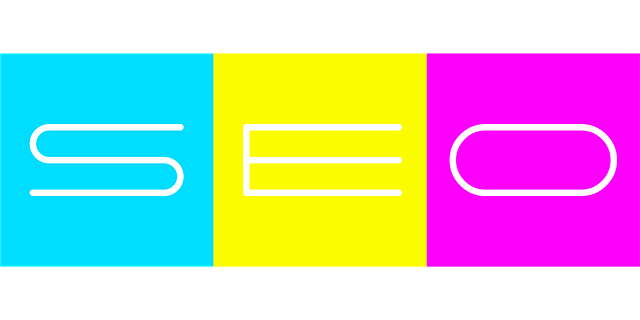On-Page SEO strategically optimizes web pages for better search rankings by balancing technical (site speed, mobile responsiveness) and content (high-quality, relevant) enhancements. Keyword research identifies terms for natural integration. Meta tags and titles, when optimized with relevance and keywords, summarize content effectively. Schema markup provides structured data for improved indexing. Visuals are optimized via alt tags and file names. User Experience, a KPI, ensures site accessibility and engagement, leading to better search rankings.
In the dynamic landscape of digital marketing, SEO content optimization is a game-changer. Advanced On-Page SEO techniques empower marketers to elevate their online presence and attract organic traffic. This comprehensive guide navigates essential strategies such as understanding fundamental SEO principles, conducting keyword research for optimal content placement, mastering meta tags and titles, leveraging Schema markup, optimizing visuals for search engines, and prioritizing user experience as a key performance indicator.
Understanding On-Page SEO Fundamentals

On-Page SEO is a strategic approach to optimizing individual web pages for better search engine rankings. It involves understanding how search engines crawl and interpret your content, ensuring your website offers a seamless user experience while aligning with search algorithms. At its core, On-Page SEO revolves around two main components: technical optimization and SEO content optimization.
Technical optimization ensures your website’s structure is accessible and understandable to search engine crawlers. This includes optimizing elements like site speed, mobile responsiveness, URL structures, meta tags, and XML sitemaps. SEO content optimization, on the other hand, focuses on creating high-quality, relevant, and engaging content that satisfies user intent. Keywords play a vital role here, but they should be naturally woven into headings, subheadings, and body text to enhance readability rather than force-feed search engines.
Keyword Research for Optimal Content Placement

Keyword research is a fundamental aspect of advanced on-page SEO, enabling content creators to align their writing with what their target audience is searching for. By utilizing tools and analytics to identify relevant keywords and phrases, content can be optimized for both search engines and readers. This involves understanding search intent, identifying long-tail keywords, and analyzing competition. Once the right terms are uncovered, they can be strategically placed within headers, subheadings, meta descriptions, and throughout the body of the text, enhancing SEO Content Optimization.
Effective keyword research ensures that the content is not only relevant but also ranks higher in search engine results pages (SERPs). It allows writers to create compelling copy that resonates with their audience while incorporating essential phrases naturally and contextually. This balance between user experience and search engine algorithms is key to achieving long-term success in online visibility and driving organic traffic.
Mastering Meta Tags and Titles

Mastering meta tags and titles is a crucial aspect of advanced on-page SEO content optimization. These elements, often overlooked, significantly impact search engine rankings. A well-crafted meta tag and title not only provide a concise summary of your webpage’s content but also play a pivotal role in how it appears in search results.
When optimizing these components, focus on relevance, clarity, and keyword integration. Each title should be unique, engaging, and accurately reflect the page’s main topic, incorporating relevant keywords naturally. Meta descriptions, equally important, offer a brief overview to entice users, encouraging clicks while also signaling to search engines the subject matter of your content.
Enhancing With Schema Markup

Schema markup is a powerful tool in the arsenal of any digital marketer focused on SEO content optimization. By providing search engines with structured data about your content, schema helps them understand the context and intent behind your words, leading to more accurate indexing and higher rankings. Imagine it as a clear map guiding search engine crawlers through your content’s intricate landscape.
This markup goes beyond simple keywords, enabling you to highlight key elements like reviews, events, recipes, or products within your text. Such enhanced data presentation doesn’t just improve SEO content optimization; it also enhances user experience by delivering more relevant search results. In today’s competitive digital arena, leveraging schema markup is a strategic move that can set your content apart and drive better visibility online.
Optimizing Visuals for Search Engines

Optimizing visuals is a crucial aspect of on-page SEO, often overlooked but with significant impact on search rankings. When integrating images and graphics into your content, ensure they are optimized for both users and search engines. This involves more than just file size reduction; it includes adding descriptive alt tags that accurately reflect the image’s content, thereby enhancing accessibility and improving SEO content optimization.
Additionally, utilizing relevant keywords in file names and setting appropriate dimensions can improve loading speeds and overall user experience. Search engines crawl visual elements, so optimizing them ensures your images contribute positively to your site’s SEO, making it more discoverable and relevant in search results.
User Experience: A Key Performance Indicator

In the realm of Advanced On-Page SEO, User Experience (UX) emerges as a powerful Key Performance Indicator (KPI). Beyond mere aesthetics, UX encompasses every interaction a user has with your website, from loading speed to ease of navigation and content consumption. Optimizing these aspects aligns closely with SEO Content Optimization strategies, ensuring that not only search engines but also visitors find your site valuable and accessible.
A positive UX signals to both users and search algorithms that your site is designed with their best interests in mind. This translates into lower bounce rates, longer sessions, and improved conversion metrics—all factors that positively influence your site’s ranking potential. Therefore, integrating UX considerations into your SEO strategy isn’t just beneficial; it’s essential for achieving long-term success in the competitive digital landscape.
